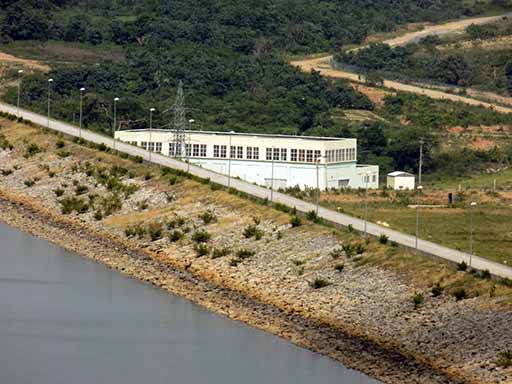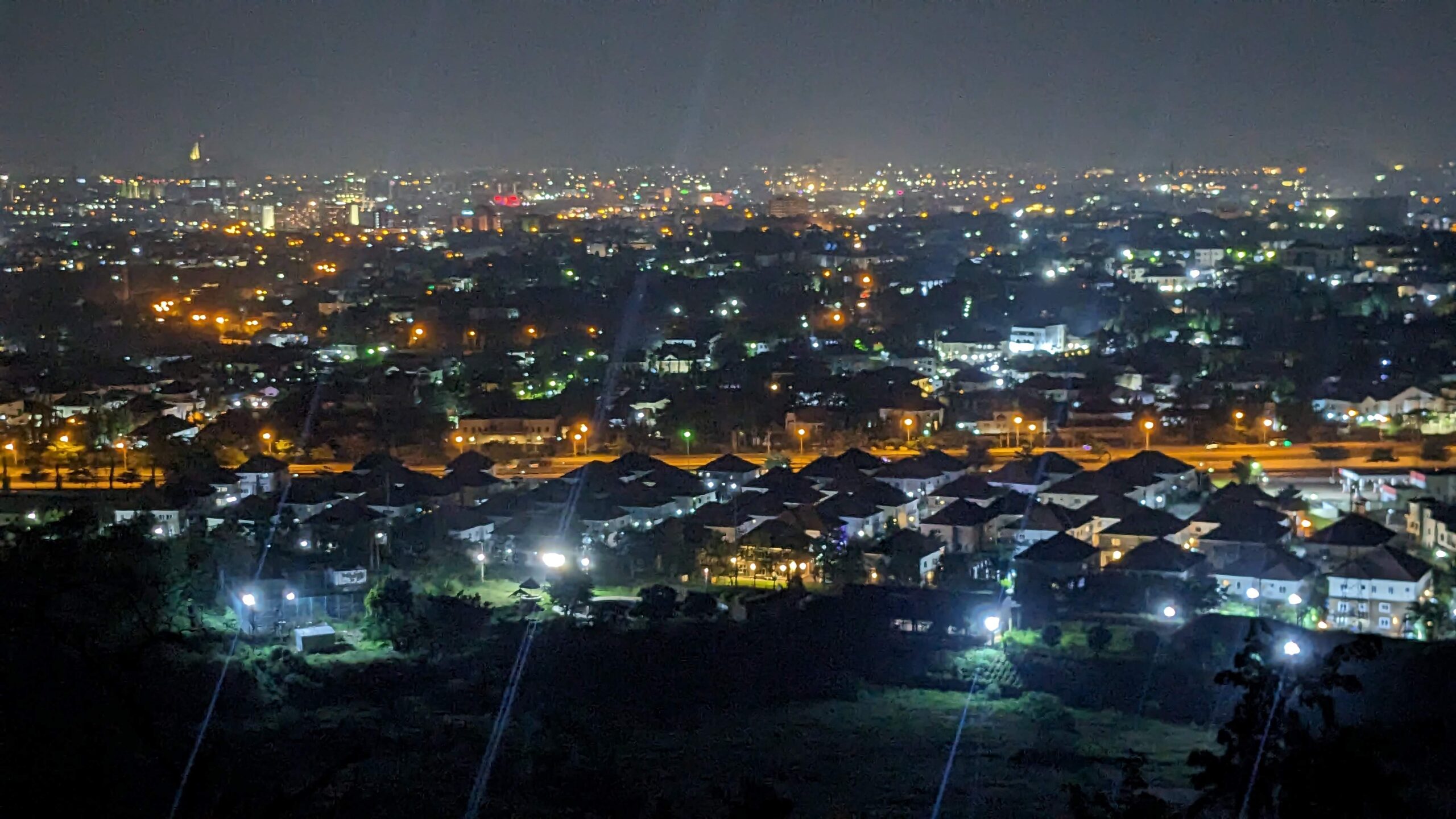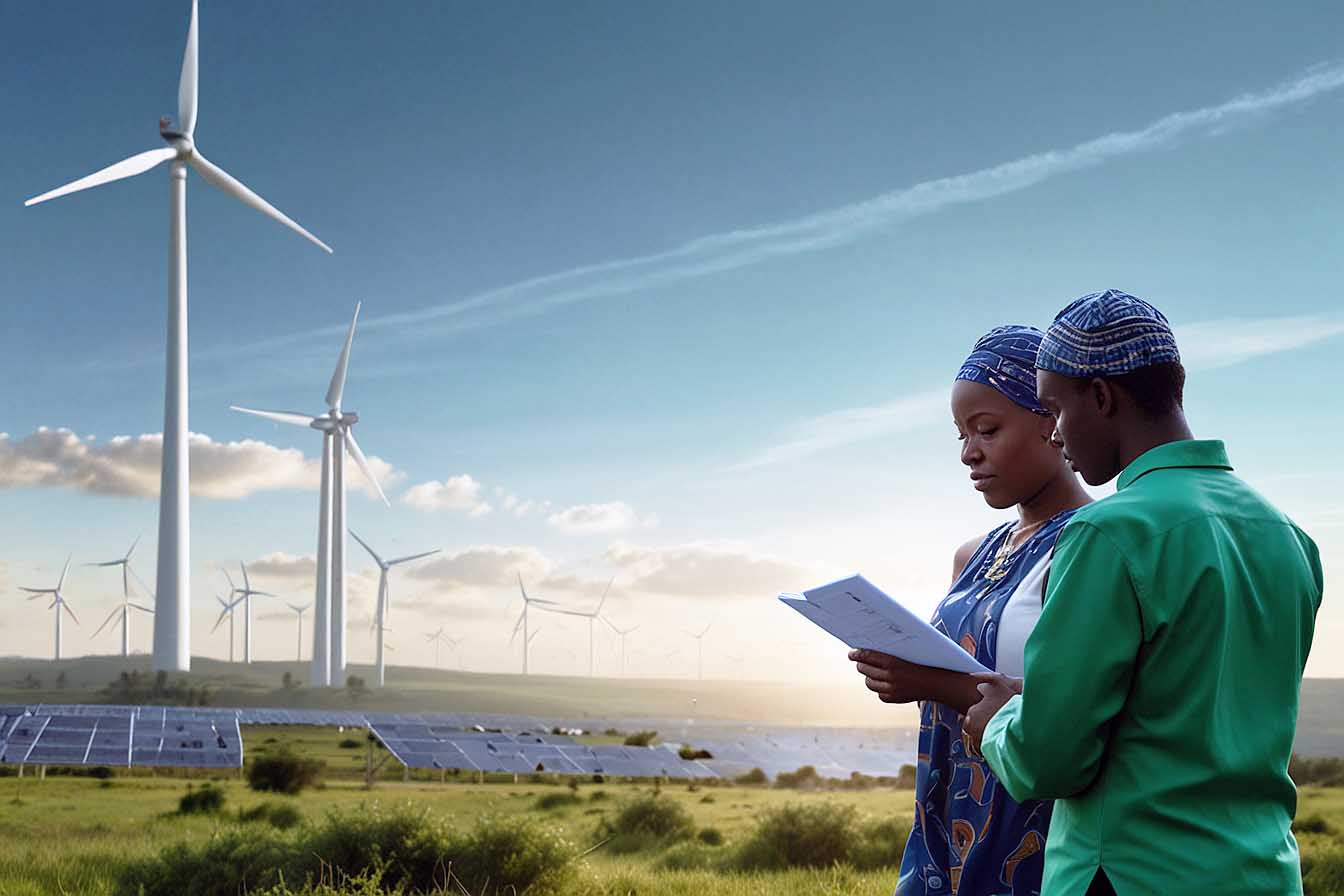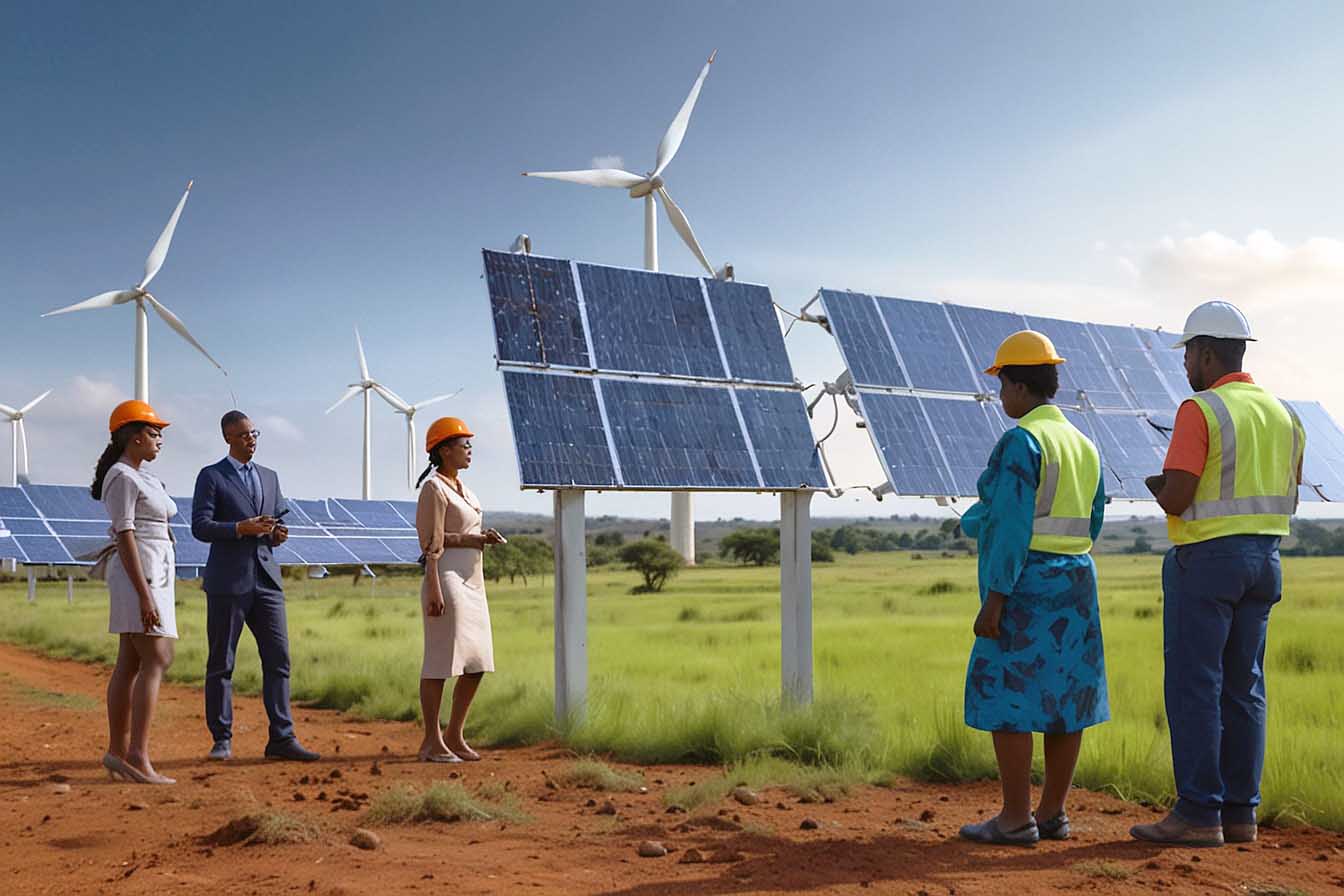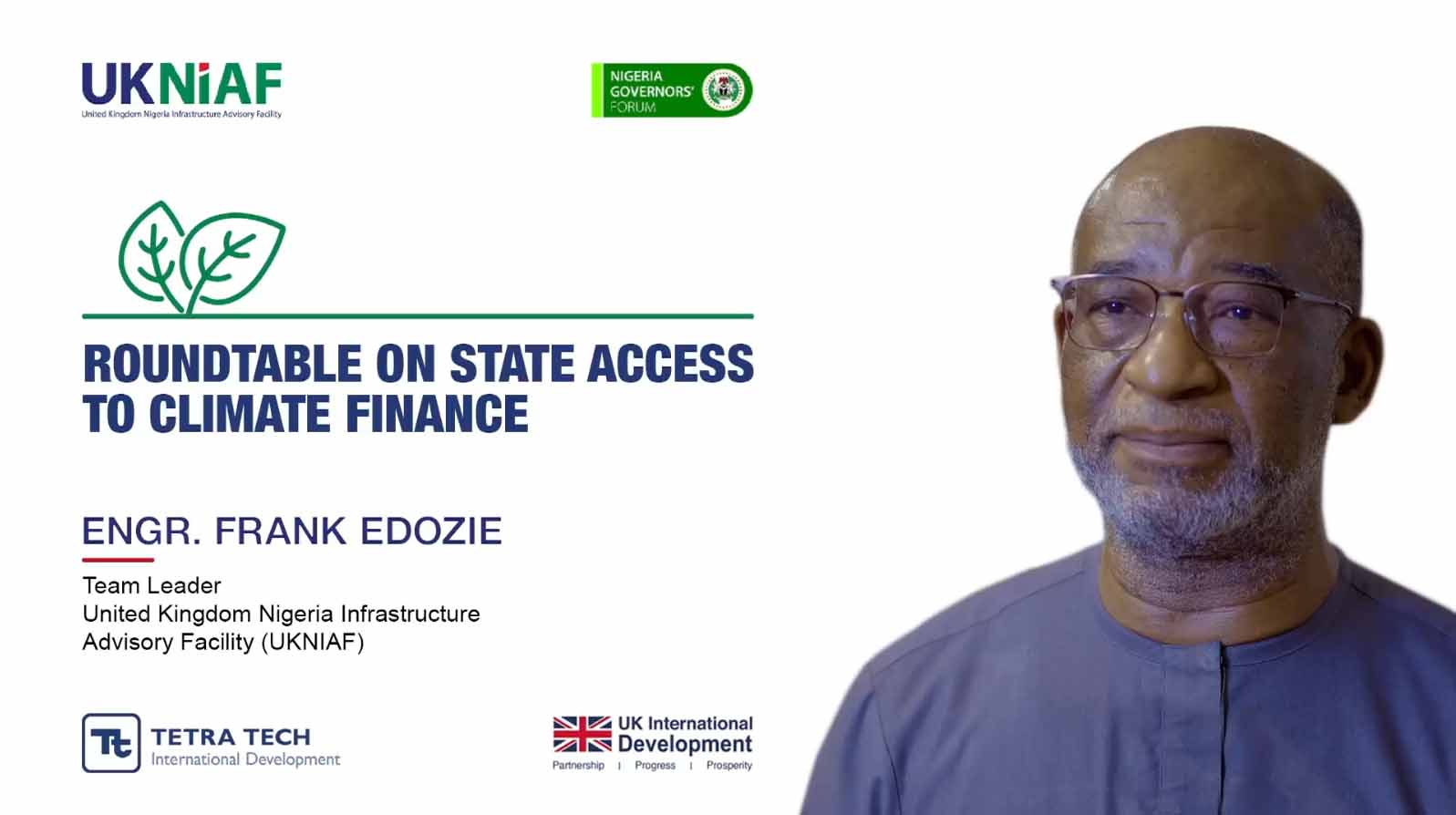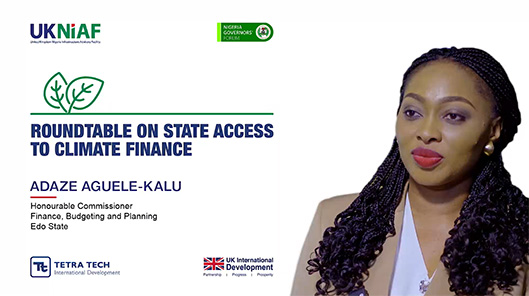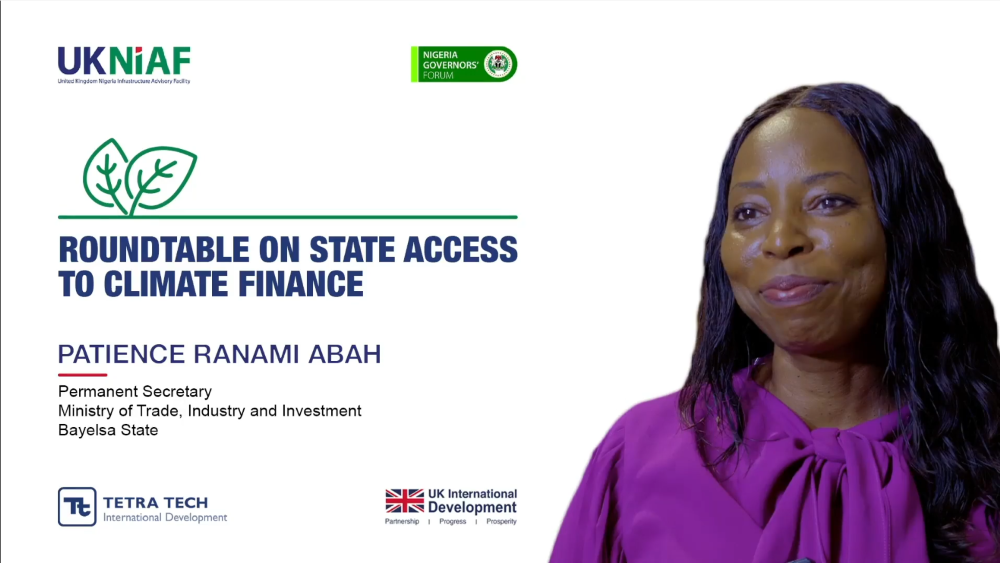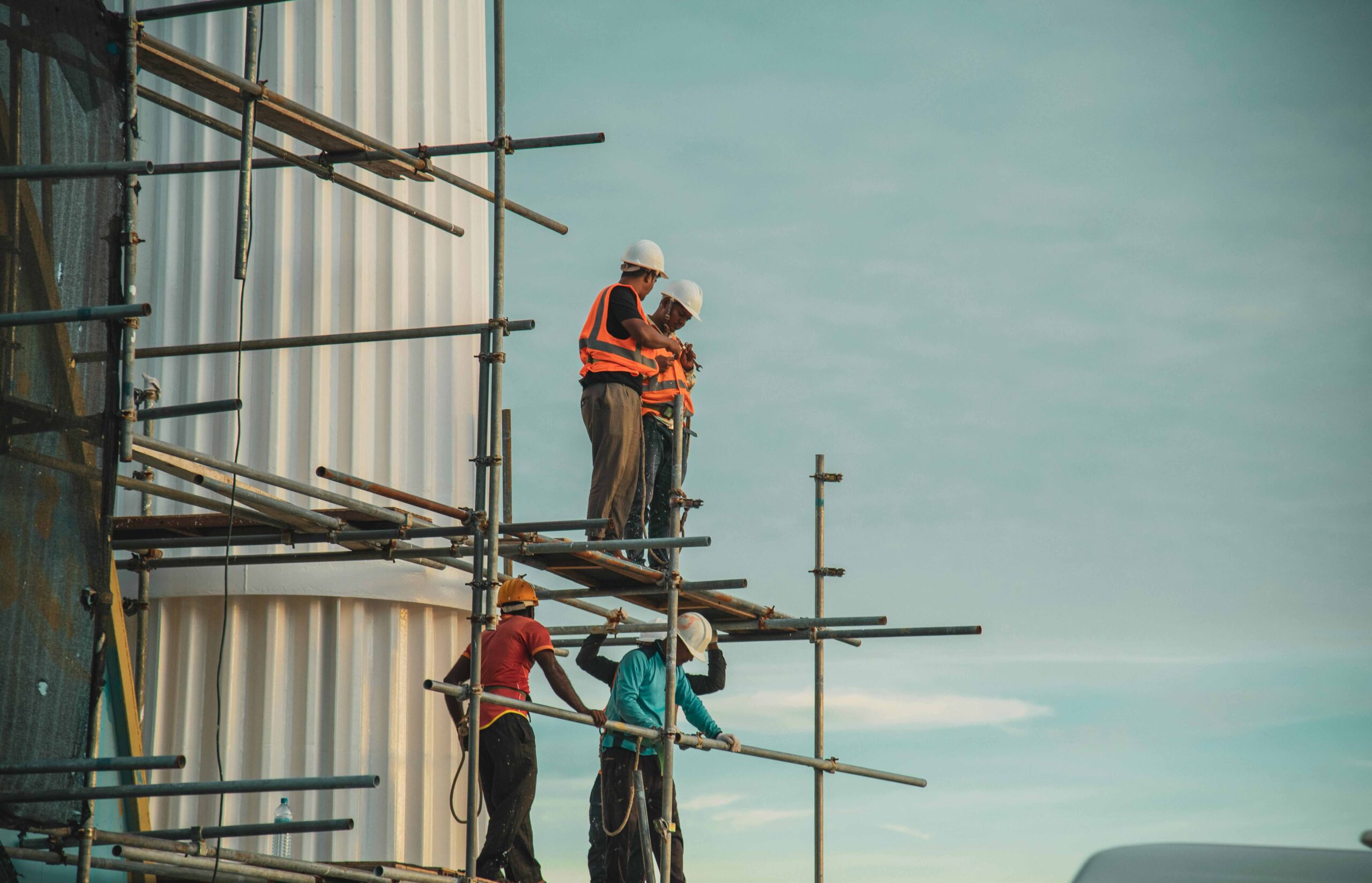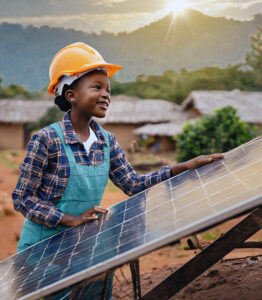What is this article about?
The process of generating, transmitting, and distributing electricity is multi-faceted, with parties with different interests at each step. Different perspectives and priorities are commonplace. To achieve a mutually beneficial goal we need to acknowledge and listen to these perspectives.
As a step in this direction UKNIAF is pleased to showcase three different perspectives from three thought leaders; Jumoke Delano is a ‘multi-jurisdictional lawyer, and former Head of Regulatory Relations at the Abuja Electricity Distribution Company, Dr. Dalia Sakr Is a UNFCCC accredited climate change expert, and Barrister Stella Odiase is UKNIAF’s Cross Cutting Adviser and a Doctoral candidate at the Institute of Development Studies, Sussex University.

Dancing in sync: Powering Nigeria through a coordinated value chain
By Jumoke Delano
Barrister Jumoke Delano is a multijurisdictional lawyer and former Head of Regulatory Affairs & Governance, Abuja Electricity Distribution Company.
Imagine a performance where the dancers keep stepping on each other’s toes or where each dancer is moving to a different rhythm. It would be a chaotic and unpleasant experience. If you were part of that dance, you would eagerly await the end of the event and avoid those dance partners in the future. What if you were stuck with those dance partners and had to keep dancing with them every day? This is exactly the challenge faced by the Nigerian Electricity Supply Industry (NESI), where the different stakeholders often dance to discordant tunes which affects the overall performance and leads to supply outages and constrained energy access.
In our dance analogy, the members of the dance crew would represent the different entities involved in the electricity supply chain. The generating companies (GenCos) produce the electricity while Transmission Company of Nigeria (TCN) acts as the bridge, helping to transport the electricity from the Gencos to the distribution companies (DisCos), who make the energy available to the end-use customers.
The Nigerian Electricity Regulatory Commission (NERC) plays the role of the choreographer, who should ensure that members of the value chain work together seamlessly to provide reliable and continuous power supply. NERCs mandate also covers balancing stakeholder interests, establishing rules, giving sanctions to non-performing members, overseeing the compensation process, and ensuring that all the performers are compensated, as well as ensuring that payments flow smoothly in the opposite direction as the energy flows from the GenCos to the customers.
The retail tariff: Compensating the performers
The tariff is the amount charged to the customer for the electricity they use. It is the payment by the customer for the electricity consumed and covers the cost of producing and delivering each kilowatt-hours (kWh) of electricity to the customer.
The tariff is influenced by factors such as the total energy generated, inflation rates, exchange rates, and administrative costs. As these variables change, the tariff may also change. For every naira of revenue received, about 23% is retained by the DisCos, approximately 70% goes to the GenCos with the remainder shared among the other members of the value chain*. As the choreographer of the electricity market, NERC has a crucial role in ensuring that the retail tariff reflects prudent costs, eliminating any inefficiencies that would otherwise be passed on to the customer.
To achieve this, NERC introduced the Service Based Tariff (SBT) framework in November 2021 with varied pricing based on the hours of supply that customers receive. Customers who receive more hours of supply are charged a higher tariff for the privilege; a similar principle as having front-row or box seats at a concert. This is meant to incentivize DisCos to invest in upgrading their networks so that they have enough capacity to increase the hours of supply to customers on each tariff band. In turn, customers receive improved service delivery and DisCos increase their revenues, a win-win for all.
The debate on subsidies and affordability
The current tariffs do not cover the actual cost of producing and delivering electricity to customers. Some industry experts argue that the government should continue to subsidise the gap between what customers currently pay and what they should actually pay to cover the cost of providing electricity. Others argue against tariff increases because it will make life harder for ordinary Nigerians. But many customers (low-income customers) already pay significantly more than they would be for grid supplied electricity by resort to self-generation using diesel and petrol generators, which costs significantly more than the true costs which they should pay for receiving electricity. As much as 75% of Nigeria’s power supply is generated nationally through self-generation, rather than through the national grid*. The cost of self-generation suggests that more people can actually afford to pay more for electricity than they currently do, raising questions about the necessity of subsidies.
*https://punchng.com/nigeria-relies-on-generators-for-75-electricity-report/
Those who invest in and produce electricity need to receive adequate compensation for their investments. At the same time, we do need sustainable interventions to support low-income customers, and ensure they have adequate, reliable electricity access. A potential solution could be to establish the Power Consumer Assistance Fund (PCAF), which is provided for in the Electricity Act of 2023 and which aims to subsidise electricity cost for the poorest electricity customers.
In conclusion, there is a critical need to improve the choreography in this dance. When all dancers are performing in sync, moving to the same rhythm, and cooperating with the choreographer, the performance will be far more enjoyable for all involved – the dancers and the audience members alike, Issues need to be addressed holistically such that players in the market are like a dance troupe performing in sync.

Diets and Electricity: What Do They Have in Common?
By Dalia Sakr
Dr Dalia Sakr is a climate change expert who provides resource efficiency and climate change related advisory support to governments in the Middle East and Africa.
Keeping your favourite bakery shop open
Imagine if you wake up in the morning and head to your favourite bakery shop to pick up a warm cup of coffee and delicious pastry. When you arrive, you find the bakery is no longer able to serve its customers. It seems the baker was selling pastries at a discounted price that doesn’t cover its production costs. This means the prices were non-cost reflective. Because of this the shop will reach a point where it has to close and give up the baker’s dreams of expanding and improving its the business.
Similarly, the price of electricity, usually called the tariff is non-cost reflective when the customer does not pay the ‘true’ costs of delivering electricity.
Less calories do not mean less joy
Continuing with the analogy of the bakery shop, as your eyes move across the wide variety of sweet temptations you purchase a gigantic bag of delicious cookies. Then quickly you feel guilty: “do I need all these calories to enjoy? Could I survive with much less and be more energetic and in shape?” You decide to follow a diet to trim down the extra fat and wisely choose healthier food including food options with healthy ‘greens’. But sometimes we need incentives or educational information to cut down on sweet treats, to exercise, and to eat more healthily.
In the language of electricity, this means slashing ineffective power use and losses through energy efficiency and replacing carbon intensive fuels with renewable energy. The latter are the two main pillars for the transitioning towards a low carbon power sector.
The electricity tariffs influence consumer choices, how much and how they use the electricity on the demand side. As to the supply side, it impacts decisions on how they manage, operate, and invest in their networks and in their sources of generation. Despite the fact that energy savings save money, the electricity consumers tend to avoid this rational choice and prefer to retain the status quo. These behavioural choices can be improved by providing people with more information, educating them on the financially rewarding and more energy-efficient alternatives, motivating by rewards and incentives by rewards and incentives, and handholding throughout the process to support them to exert the extra effort and break the resistance to change towards these better options.
The increase of electricity tariff has been known to stimulate greener choices as it illuminates the electricity bill losses associated with the old behaviours and motivates instead to lower overall electricity consumption*. The avoided need to add expensive new power generation or transmission capacity and by reducing pressure on energy resources would save significant funds for governments and this could be directed towards equitable and affordable services to all citizens to support the just energy transition.
*https://www.gov.uk/government/publications/net-zero-strategy/3-reducing-emissions-across-the-economy
Tapping into global experiences
Several countries have demonstrated that an increase in the electricity tariff could actually advance the transition to a low carbon economy.
In South Africa and Egypt, the energy crisis (which was due to shortage of fossil fuels leading to expanded load shedding and power outages) was the trigger for comprehensive reforms in the respective power sectors. In each case, the low carbon transition was encouraged through private and public investments in renewable energy and energy efficiency. Poor and vulnerable households were cushioned against increases in electricity tariffs through social safety nets.
The residential electricity sector in Mexico, similar to other emerging countries, is highly subsidized where on average, households pay only 46% of the total cost of the service. Residential electricity prices have increased steadily in the country since the end of 2020. Minimum Energy Efficiency Standards which require residential appliances to have a certain level of energy efficiency, have been part of the Mexican national energy policy since the early nineties. These have helped in the reduction of electricity consumption and waste while promoting an increase in the use of renewable energy sources.
In China, increasing the electricity tariff was instrumental in promoting energy efficiency by optimizing resource allocation. China faced chronic power shortages and launched a series of policies and measures to stimulate supply including restructuring of the Chinese electricity tariff system. The tariff level had risen steadily since 1985, to a point where by 2004, the average consumer tariff had risen 4.5 times. This price hike has played a significant role in promoting efficiency in Chinese electricity consumption.
In the countries above, tariff increases have helped nudge consumers to be more energy efficient and also enabled the power sector to divert funds previously allocated to expanding transmission capability towards low carbon alternatives. However, every country has it unique context and the Nigerian situation has some variations with the countries discussed above. Nevertheless, to go back to the bakery story that we started with; all of us enjoy a sweet treat, but all of us, regardless of our country, should eat a healthy diet. Different incentives and information can influence our move towards a healthier behaviour. Similarly with countries there are elements of best practice and lessons learned that we might adopt for the purpose of improving electricity cost recovery and moving towards a low carbon path.

Just give us Light: The Customer Perspective
By Stella Odiase
Barrister Stella Odiase is UKNIAFs Cross Cutting Adviser and a Doctoral candidate at the Institute of Development Studies, Sussex University.
I attended an (electricity) Customer Complaints Resolution meeting today. The meeting was actually a town hall-style event where the Electricity Regulator (NERC) and one of the Distribution Companies (DisCo), collaborated with UKNIAF to provide a platform for electricity customers to share their electricity access experiences and discuss problems related to this. The idea was to enable a resolution of customer problems either on the spot or at the very least to begin the resolution processes. During the event, both NERC and the DisCo outlined some of the work which they have been doing to ensure improved electricity supply.
My interaction with sector experts at UKNIAF has enlightened me on how important it is for Nigeria to sort out the supply-side issues which NERC highlighted at the event and also how critical it is for several things to work together at the same time, for more people to access regular power supply. So, I appreciate the importance of technical terminology like ‘cost reflective tariffs’, ‘efficient cost of operation’ and ‘return on capital invested’. To an electricity customer however, these sound like more talk and mere talk because the electric power outages in today’s Nigeria are now painfully frequent.
At the Complaints Resolution meeting mentioned above, there were over 250 men and women from the neighbouring communities, all glad for an opportunity to come face to face with *‘NEPA’ so they could tell them how unhappy they have been with the state of electricity supply4. Over and over again, the refrain ‘just give us light’ was either expressed or implied as customers saw the people that they could channel their anger towards. According to one participant ’we are ready to pay whatever as long as we have light…because the suffering is too much’. Nigeria is going through rather turbulent economic times and there is a lot for ordinary citizens to be angry about. A lot of that anger was evident in the general tone and posture of the customers. In spite of this however, what I did not hear was any customer complaining about having to pay the cost of actual electricity, which they received.
Customers and their electricity bills
In terms of the cost of electricity, the complaints raised during the forum revolved around billing for non-existent power supply. Some customers are baffled that they still continue to receive exorbitant bills even when they have not had electricity for some time, a practice which is referred to in the Power sector as estimated billing.
Closely linked to this issue is that there are still far too many unmetered electricity customers in the country, which is problematic because without metering it is impossible to charge customers based on their actual electricity consumption levels.
*NEPA stands for the National Electric Power Authority (NEPA), which was the state owned monopoly formerly in charge of electricity in Nigeria. With the privatisation of the power sector in 2005, NEPA became the Power Holding Company of Nigeria (PHCN), which was formed as a transitional corporation to midwife the privatisation process
The Crux of the Matter
At the meeting, the customers were most frustrated about how little power supply they actually receive daily. Some customers complained of long stretches of time with no electricity (‘no light since after Christmas’); there were also micro and small business owners who are struggling to stay afloat like the widowed fishmonger who has had to throw away several heaps of fish in the last two months because there has been ‘no light to keep them for sale’. Some customers had contributed money and jointly purchased transformers to supply electricity within their residential areas. These customers were surprised to discover that they can actually claim a reimbursement of this expense or be reimbursed when they are over billed due to estimated billing, which happened in the Kaduna DisCo recently*.
Power sector experts have always made the point that there are critical issues apart from pricing that need to be addressed if the supply of electricity is to be improved. One of such issues is the value chain alignment or in Jumoke’s words above, ‘dancing in sync’. Another issue is how well energy efficiency measures (or cost saving measures) are adopted across the value chain, a process which Dalia referred to earlier in this piece as going on a diet. The question for the customer then becomes, ‘even if tariffs are increased can we be sure that we will receive improved service’? In a context where the reliability of electricity supply depends on institutional capacity to address so many other variables, the answer does not appear to be affirmative. Increasing tariffs alone without addressing the institutional challenges which limit efficiency and synergy in the supply value chain, is not likely to improve electricity access in Nigeria.
*https://punchng.com/kaduna-disco-refunds-overbilled-customers/

